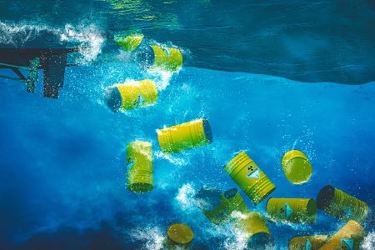Report: Nearly 200 Million Pounds Of Contaminants Released To U.S. Waterways In 2020


As the foundational Clean Water Act — meant to serve as the primary federal law protecting U.S. source water from pollution — neared a milestone birthday, new data indicated that it might not be as effective as many would hope.
“A new watchdog report is revealing that millions of pounds of toxic chemicals, including some that can cause cancer and other serious health issues, were dumped into U.S. waterways in 2020,” Yahoo! News reported. “The report … found nearly 200 million pounds of toxic chemicals were poured into lakes, rivers and streams.”
The Clean Water Act was originally published on October 18, 1972, and as it approached its 50th birthday, the report’s authors suggested that it has not defended source water quality as well as it might have in that time.
“Industrial facilities released at least 193.6 million pounds of toxic substances into U.S. waterways in 2020, including chemicals known to cause cancer, reproductive problems and developmental issues in children,” the report reads, per Yahoo! News. “These high volumes stand in stark contrast to the Clean Water Act’s stated objective of eliminating direct discharges of pollution by 1985.”
The report identified Texas, Indiana, Virginia, Louisiana, Alabama, North Carolina, Mississippi, Ohio, Kentucky, and Illinois as the states contributing the most source water pollution. And it identified industrial operations as the main perpetrators.
As these polluters consider reconciling their wastewater practices, and consumers grapple with the potential consequences of their pollution, the authors of the report suggested stronger regulations to reduce the amount of contamination entering the country’s waters. As the Clean Water Act turns 50, it seems it might be time to revisit source water quality regulation.
“Moving forward, the researchers recommended that policymakers update pollution control standards in order to dramatically reduce toxic releases into the country’s waterways,” according to The Hill. “Other suggestions focused on restricting the use of toxic chemicals in product manufacturing, as well as situating chemical storage facilities at a distance from waterways.”
To read more about how pollution impacts drinking water treatment operations, visit Water Online’s Source Water Contamination Solutions Center.
